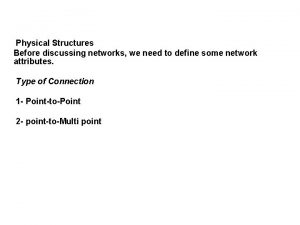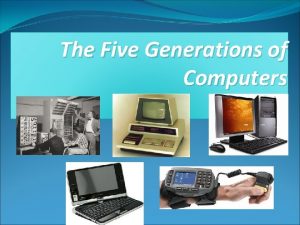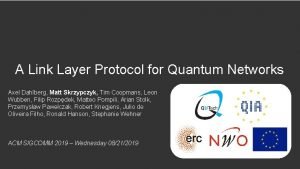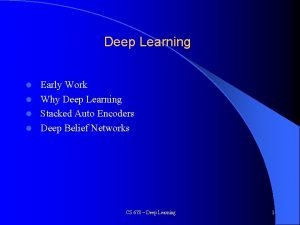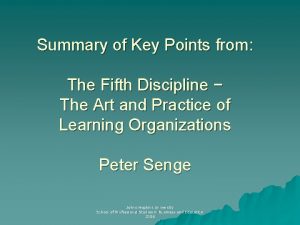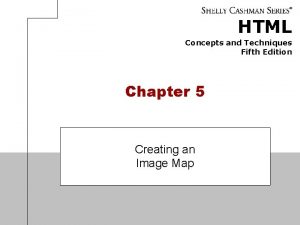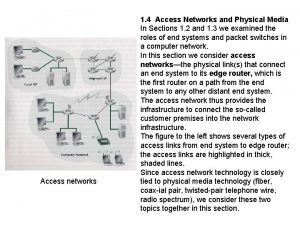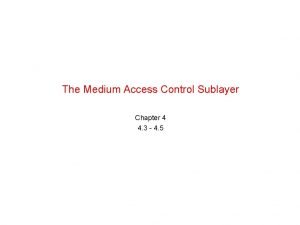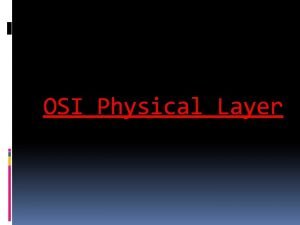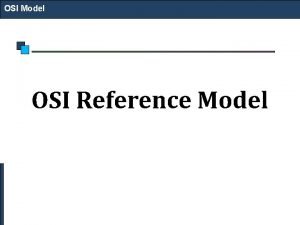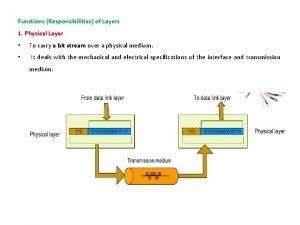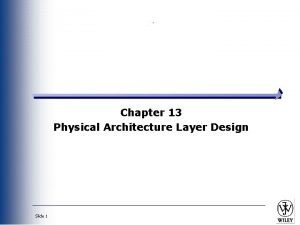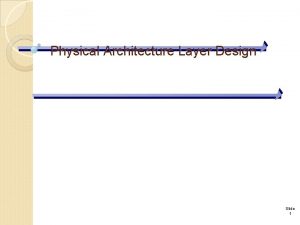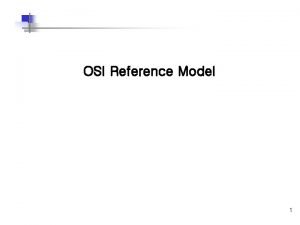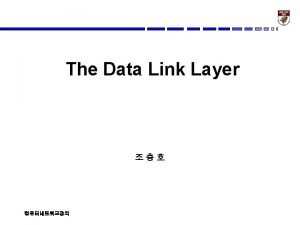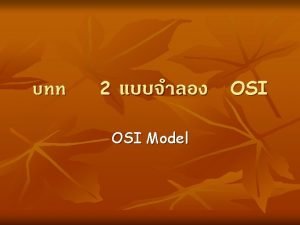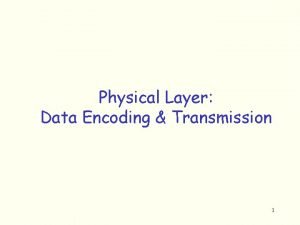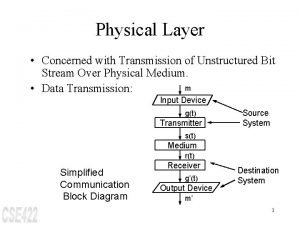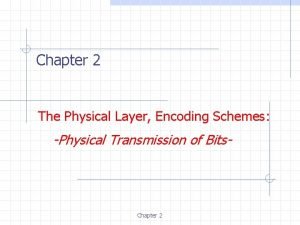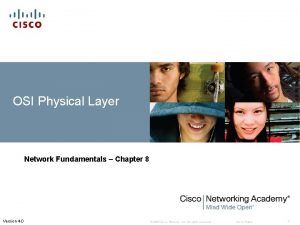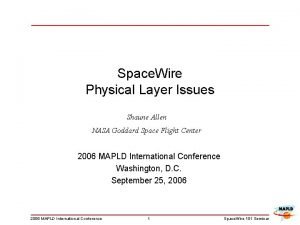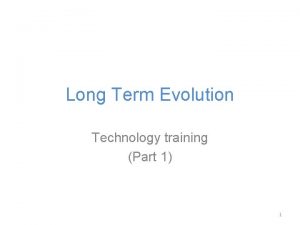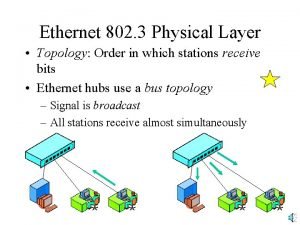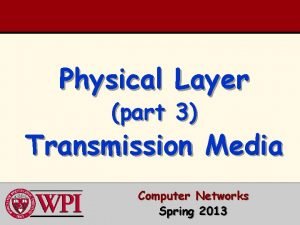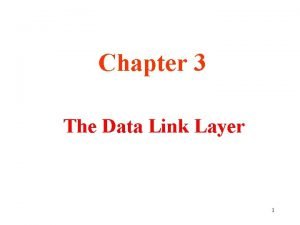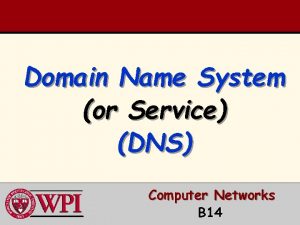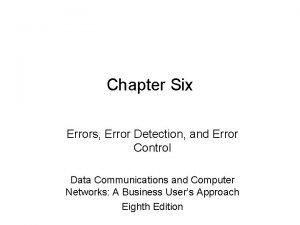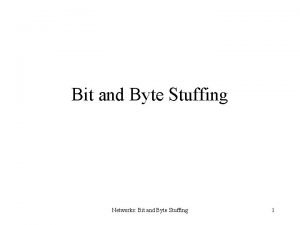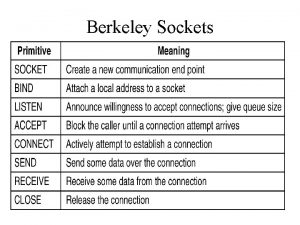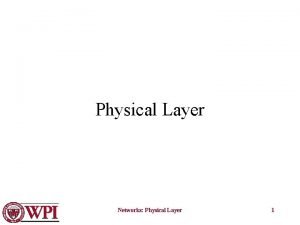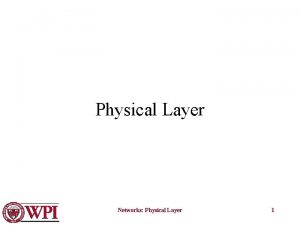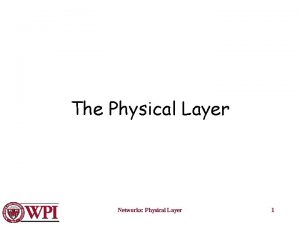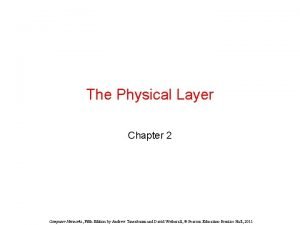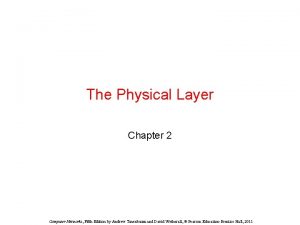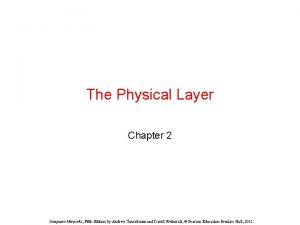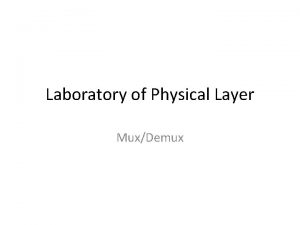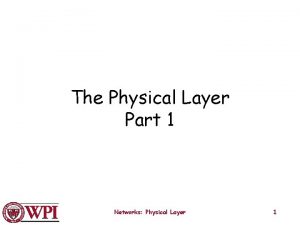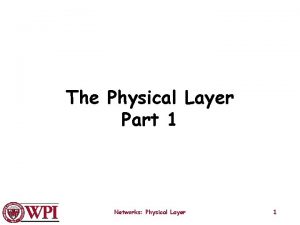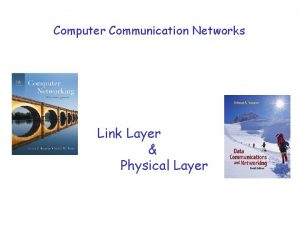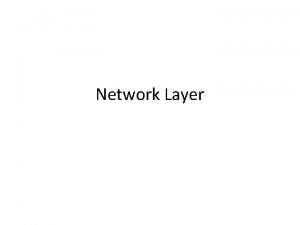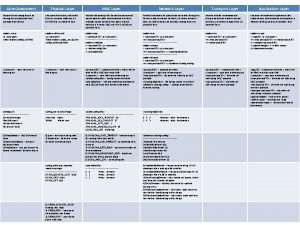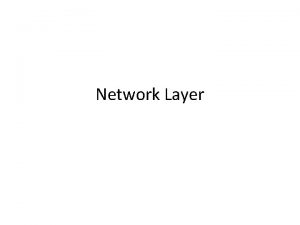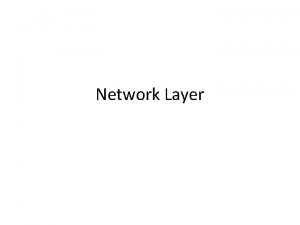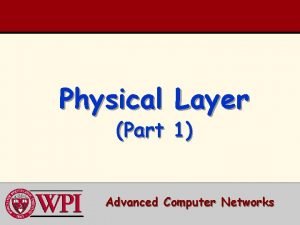The Physical Layer Chapter 2 Computer Networks Fifth













































































- Slides: 77

The Physical Layer Chapter 2 Computer Networks, Fifth Edition by Andrew Tanenbaum and David Wetherall, © Pearson Education-Prentice Hall, 2011

Theoretical Basis for Data Communication • Fourier analysis • Bandwidth-limited signals • Maximum data rate of a channel Computer Networks, Fifth Edition by Andrew Tanenbaum and David Wetherall, © Pearson Education-Prentice Hall, 2011

Fourier Analysis • We model the behavior of variation of voltage or current with mathematical functions • Fourier series is used • Function reconstructed with Computer Networks, Fifth Edition by Andrew Tanenbaum and David Wetherall, © Pearson Education-Prentice Hall, 2011

Bandwidth-Limited Signals (1) A binary signal and its root-mean-square Fourier amplitudes. Computer Networks, Fifth Edition by Andrew Tanenbaum and David Wetherall, © Pearson Education-Prentice Hall, 2011

Bandwidth-Limited Signals (2) (b)-(e) Successive approximations to the original signal. Computer Networks, Fifth Edition by Andrew Tanenbaum and David Wetherall, © Pearson Education-Prentice Hall, 2011

Bandwidth-Limited Signals (3) (b)-(e) Successive approximations to the original signal. Computer Networks, Fifth Edition by Andrew Tanenbaum and David Wetherall, © Pearson Education-Prentice Hall, 2011

Bandwidth-Limited Signals (4) (b)-(e) Successive approximations to the original signal. Computer Networks, Fifth Edition by Andrew Tanenbaum and David Wetherall, © Pearson Education-Prentice Hall, 2011

Bandwidth-Limited Signals (5) (b)-(e) Successive approximations to the original signal. Computer Networks, Fifth Edition by Andrew Tanenbaum and David Wetherall, © Pearson Education-Prentice Hall, 2011

Bandwidth-Limited Signals (6) Relation between data rate and harmonics for our example. Computer Networks, Fifth Edition by Andrew Tanenbaum and David Wetherall, © Pearson Education-Prentice Hall, 2011

The Maximum Data Rate of a Channel • Nyquist’s theorem • Shannon’s formula for capacity of a noisy channel Computer Networks, Fifth Edition by Andrew Tanenbaum and David Wetherall, © Pearson Education-Prentice Hall, 2011

Guided Transmission Media • • • Magnetic media Twisted pairs Coaxial cable Power lines Fiber optics Computer Networks, Fifth Edition by Andrew Tanenbaum and David Wetherall, © Pearson Education-Prentice Hall, 2011

Magnetic Media • Write data onto magnetic media • Disks • Tapes • Data transmission speed • Never underestimate the bandwidth of a station wagon full of tapes hurtling down the highway. Computer Networks, Fifth Edition by Andrew Tanenbaum and David Wetherall, © Pearson Education-Prentice Hall, 2011

Twisted Pairs Category 5 UTP cable with four twisted pairs Computer Networks, Fifth Edition by Andrew Tanenbaum and David Wetherall, © Pearson Education-Prentice Hall, 2011

Coaxial Cable A coaxial cable Computer Networks, Fifth Edition by Andrew Tanenbaum and David Wetherall, © Pearson Education-Prentice Hall, 2011

Power Lines A network that uses household electrical wiring. Computer Networks, Fifth Edition by Andrew Tanenbaum and David Wetherall, © Pearson Education-Prentice Hall, 2011

Fiber Optics (1) Three examples of a light ray from inside a silica fiber impinging on the air/silica boundary at different angles. Computer Networks, Fifth Edition by Andrew Tanenbaum and David Wetherall, © Pearson Education-Prentice Hall, 2011

Fiber Optics (2) Light trapped by total internal reflection. Computer Networks, Fifth Edition by Andrew Tanenbaum and David Wetherall, © Pearson Education-Prentice Hall, 2011

Transmission of Light Through Fiber Attenuation of light through fiber in the infrared region Computer Networks, Fifth Edition by Andrew Tanenbaum and David Wetherall, © Pearson Education-Prentice Hall, 2011

Fiber Cables (1) Views of a fiber cable Computer Networks, Fifth Edition by Andrew Tanenbaum and David Wetherall, © Pearson Education-Prentice Hall, 2011

Fiber Cables (2) A comparison of semiconductor diodes and LEDs as light sources Computer Networks, Fifth Edition by Andrew Tanenbaum and David Wetherall, © Pearson Education-Prentice Hall, 2011

Wireless Transmission • • • The Electromagnetic Spectrum Radio Transmission Microwave Transmission Infrared Transmission Light Transmission Computer Networks, Fifth Edition by Andrew Tanenbaum and David Wetherall, © Pearson Education-Prentice Hall, 2011

The Electromagnetic Spectrum (1) The electromagnetic spectrum and its uses for communication Computer Networks, Fifth Edition by Andrew Tanenbaum and David Wetherall, © Pearson Education-Prentice Hall, 2011

The Electromagnetic Spectrum (2) Spread spectrum and ultra-wideband (UWB) communication Computer Networks, Fifth Edition by Andrew Tanenbaum and David Wetherall, © Pearson Education-Prentice Hall, 2011

Radio Transmission (1) In the VLF, and MF bands, radio waves follow the curvature of the earth Computer Networks, Fifth Edition by Andrew Tanenbaum and David Wetherall, © Pearson Education-Prentice Hall, 2011

Radio Transmission (2) In the HF band, they bounce off the ionosphere. Computer Networks, Fifth Edition by Andrew Tanenbaum and David Wetherall, © Pearson Education-Prentice Hall, 2011

The Politics of the Electromagnetic Spectrum ISM and U-NII bands used in the United States by wireless devices Computer Networks, Fifth Edition by Andrew Tanenbaum and David Wetherall, © Pearson Education-Prentice Hall, 2011

Light Transmission Convection currents can interfere with laser communication systems. A bidirectional system with two lasers is pictured here. Computer Networks, Fifth Edition by Andrew Tanenbaum and David Wetherall, © Pearson Education-Prentice Hall, 2011

Communication Satellites • • Geostationary Satellites Medium-Earth Orbit Satellites Low-Earth Orbit Satellites Versus Fiber Computer Networks, Fifth Edition by Andrew Tanenbaum and David Wetherall, © Pearson Education-Prentice Hall, 2011

Communication Satellites Communication satellites, some properties, including: altitude above earth, round-trip delay time, number of satellites for global coverage. Computer Networks, Fifth Edition by Andrew Tanenbaum and David Wetherall, © Pearson Education-Prentice Hall, 2011

Geostationary Satellites (1) The principal satellite bands Computer Networks, Fifth Edition by Andrew Tanenbaum and David Wetherall, © Pearson Education-Prentice Hall, 2011

Geostationary Satellites (2) VSATs using a hub. Computer Networks, Fifth Edition by Andrew Tanenbaum and David Wetherall, © Pearson Education-Prentice Hall, 2011

Low-Earth Orbit Satellites (1) The Iridium satellites form six necklaces around the earth. Computer Networks, Fifth Edition by Andrew Tanenbaum and David Wetherall, © Pearson Education-Prentice Hall, 2011

Low-Earth Orbit Satellites (2) Relaying in space. Computer Networks, Fifth Edition by Andrew Tanenbaum and David Wetherall, © Pearson Education-Prentice Hall, 2011

Low-Earth Orbit Satellites (3) Relaying on the ground Computer Networks, Fifth Edition by Andrew Tanenbaum and David Wetherall, © Pearson Education-Prentice Hall, 2011

Digital Modulation and Multiplexing • • • Baseband Transmission Passband Transmission Frequency Division Multiplexing Time Division Multiplexing Code Division Multiplexing Computer Networks, Fifth Edition by Andrew Tanenbaum and David Wetherall, © Pearson Education-Prentice Hall, 2011

Baseband Transmission Line codes: (a) Bits, (b) NRZ, (c) NRZI, (d) Manchester, (e) Bipolar or AMI. Computer Networks, Fifth Edition by Andrew Tanenbaum and David Wetherall, © Pearson Education-Prentice Hall, 2011

Clock Recovery 4 B/5 B mapping. Computer Networks, Fifth Edition by Andrew Tanenbaum and David Wetherall, © Pearson Education-Prentice Hall, 2011

Passband Transmission (1) (a) A binary signal. (b) Amplitude shift keying. (c) Frequency shift keying. (d) Phase shift keying. Computer Networks, Fifth Edition by Andrew Tanenbaum and David Wetherall, © Pearson Education-Prentice Hall, 2011

Passband Transmission (2) (a) QPSK. (b) QAM-16. (c) QAM-64. Computer Networks, Fifth Edition by Andrew Tanenbaum and David Wetherall, © Pearson Education-Prentice Hall, 2011

Frequency Division Multiplexing (1) Gray-coded QAM-16. Computer Networks, Fifth Edition by Andrew Tanenbaum and David Wetherall, © Pearson Education-Prentice Hall, 2011

Frequency Division Multiplexing (2) Frequency division multiplexing. (a) The original bandwidths. (b) The bandwidths raised in frequency. (c) The multiplexed channel. Computer Networks, Fifth Edition by Andrew Tanenbaum and David Wetherall, © Pearson Education-Prentice Hall, 2011

Frequency Division Multiplexing (3) Orthogonal frequency division multiplexing (OFDM). Computer Networks, Fifth Edition by Andrew Tanenbaum and David Wetherall, © Pearson Education-Prentice Hall, 2011

Time Division Multiplexing (TDM). Computer Networks, Fifth Edition by Andrew Tanenbaum and David Wetherall, © Pearson Education-Prentice Hall, 2011

Code Division Multiplexing (1) (a) Chip sequences for four stations. (b) Signals the sequences represent Computer Networks, Fifth Edition by Andrew Tanenbaum and David Wetherall, © Pearson Education-Prentice Hall, 2011

Code Division Multiplexing (2) (a) Six examples of transmissions. (b) Recovery of station C’s Computer Networks, Fifth Edition by Andrew Tanenbaum and David Wetherall, © Pearson Education-Prentice Hall, 2011

The Public Switched Telephone Network • • • Structure of the telephone system Politics of telephones Local loop: modems, ADSL, and fiber Trunks and multiplexing Switching Computer Networks, Fifth Edition by Andrew Tanenbaum and David Wetherall, © Pearson Education-Prentice Hall, 2011

Structure of the Telephone System (1) (a) Fully interconnected network. (b) Centralized switch. (c) Two-level hierarchy. Computer Networks, Fifth Edition by Andrew Tanenbaum and David Wetherall, © Pearson Education-Prentice Hall, 2011

Structure of the Telephone System (2) A typical circuit route for a long-distance call. Computer Networks, Fifth Edition by Andrew Tanenbaum and David Wetherall, © Pearson Education-Prentice Hall, 2011

Structure of the Telephone System (3) Major Components 1. Local loops analog twisted pairs to houses, businesses). 2. Trunks (digital fiber optic links between switching offices). 3. Switching offices (calls are moved from one trunk to another). Computer Networks, Fifth Edition by Andrew Tanenbaum and David Wetherall, © Pearson Education-Prentice Hall, 2011

The Politics of Telephones The relationship of LATAs, LECs, and IXCs. Circles are LEC switching offices. Hexagons belong to IXC whose number is in it. Computer Networks, Fifth Edition by Andrew Tanenbaum and David Wetherall, © Pearson Education-Prentice Hall, 2011

Telephone Modems Use of both analog and digital transmission for computer -tocomputer call. Conversion done by modems and codecs. Computer Networks, Fifth Edition by Andrew Tanenbaum and David Wetherall, © Pearson Education-Prentice Hall, 2011

Digital Subscriber Lines (1) Bandwidth versus distance over Category 3 UTP for DSL. Computer Networks, Fifth Edition by Andrew Tanenbaum and David Wetherall, © Pearson Education-Prentice Hall, 2011

Digital Subscriber Lines (2) Operation of ADSL using discrete multitone modulation. Computer Networks, Fifth Edition by Andrew Tanenbaum and David Wetherall, © Pearson Education-Prentice Hall, 2011

Digital Subscriber Lines (3) A typical ADSL equipment configuration. Computer Networks, Fifth Edition by Andrew Tanenbaum and David Wetherall, © Pearson Education-Prentice Hall, 2011

Fiber To The Home Passive optical network for Fiber To The Home. Computer Networks, Fifth Edition by Andrew Tanenbaum and David Wetherall, © Pearson Education-Prentice Hall, 2011

Time Division Multiplexing (1) The T 1 carrier (1. 544 Mbps). Computer Networks, Fifth Edition by Andrew Tanenbaum and David Wetherall, © Pearson Education-Prentice Hall, 2011

Time Division Multiplexing (2) Multiplexing T 1 streams into higher carriers Computer Networks, Fifth Edition by Andrew Tanenbaum and David Wetherall, © Pearson Education-Prentice Hall, 2011

SONET/SDH (1) Two back-to-back SONET frames. Computer Networks, Fifth Edition by Andrew Tanenbaum and David Wetherall, © Pearson Education-Prentice Hall, 2011

SONET/SDH (2) SONET and SDH multiplex rates. Computer Networks, Fifth Edition by Andrew Tanenbaum and David Wetherall, © Pearson Education-Prentice Hall, 2011

Wavelength Division Multiplexing Wavelength division multiplexing Computer Networks, Fifth Edition by Andrew Tanenbaum and David Wetherall, © Pearson Education-Prentice Hall, 2011

Circuit Switching/Packet Switching (1) (a) Circuit switching. (b) Packet switching. Computer Networks, Fifth Edition by Andrew Tanenbaum and David Wetherall, © Pearson Education-Prentice Hall, 2011

Circuit Switching/Packet Switching (2) Timing of events in (a) circuit switching, (b) packet switching Computer Networks, Fifth Edition by Andrew Tanenbaum and David Wetherall, © Pearson Education-Prentice Hall, 2011

Circuit Switching/Packet Switching (3) A comparison of circuit-switched and packet-switched networks. Computer Networks, Fifth Edition by Andrew Tanenbaum and David Wetherall, © Pearson Education-Prentice Hall, 2011

Mobile Telephone System • First-Generation (1 G) Mobile Phones Analog Voice • Second-Generation (2 G) Mobile Phones Digital Voice • Third-Generation (3 G) Mobile Phones Digital Voice + Data Computer Networks, Fifth Edition by Andrew Tanenbaum and David Wetherall, © Pearson Education-Prentice Hall, 2011

Advanced Mobile Phone System (a) Frequencies are not reused in adjacent cells. (b) To add more users, smaller cells can be used. Computer Networks, Fifth Edition by Andrew Tanenbaum and David Wetherall, © Pearson Education-Prentice Hall, 2011

GSM—The Global System for Mobile Communications (1) GSM mobile network architecture. Computer Networks, Fifth Edition by Andrew Tanenbaum and David Wetherall, © Pearson Education-Prentice Hall, 2011

GSM—The Global System for Mobile Communications (2) GSM uses 124 frequency channels, each of which uses an eight -slot TDM system. Computer Networks, Fifth Edition by Andrew Tanenbaum and David Wetherall, © Pearson Education-Prentice Hall, 2011

GSM—The Global System for Mobile Communications (3) A portion of the GSM framing structure. Computer Networks, Fifth Edition by Andrew Tanenbaum and David Wetherall, © Pearson Education-Prentice Hall, 2011

Digital Voice and Data (1) Basic services intend by IMT-2000 network • High-quality voice transmission. • Messaging (replacing email, fax, SMS, chat). • Multimedia (music, videos, films, television). • Internet access (Web surfing, incl. audio, video). Computer Networks, Fifth Edition by Andrew Tanenbaum and David Wetherall, © Pearson Education-Prentice Hall, 2011

Digital Voice and Data (2) Soft handoff (a) before, (b) during, and (c) after. Computer Networks, Fifth Edition by Andrew Tanenbaum and David Wetherall, © Pearson Education-Prentice Hall, 2011

Cable Television • • • Community antenna television Internet over cable Spectrum allocation Cable modems ADSL versus cable Computer Networks, Fifth Edition by Andrew Tanenbaum and David Wetherall, © Pearson Education-Prentice Hall, 2011

Community Antenna Television An early cable television system Computer Networks, Fifth Edition by Andrew Tanenbaum and David Wetherall, © Pearson Education-Prentice Hall, 2011

Internet over Cable (1) Cable television Computer Networks, Fifth Edition by Andrew Tanenbaum and David Wetherall, © Pearson Education-Prentice Hall, 2011

Internet over Cable (2) The fixed telephone system. Computer Networks, Fifth Edition by Andrew Tanenbaum and David Wetherall, © Pearson Education-Prentice Hall, 2011

Spectrum Allocation Frequency allocation in a typical cable TV system used for Internet access. Computer Networks, Fifth Edition by Andrew Tanenbaum and David Wetherall, © Pearson Education-Prentice Hall, 2011

Cable Modems Typical details of the upstream and downstream channels in North America. Computer Networks, Fifth Edition by Andrew Tanenbaum and David Wetherall, © Pearson Education-Prentice Hall, 2011

End Chapter 2 Computer Networks, Fifth Edition by Andrew Tanenbaum and David Wetherall, © Pearson Education-Prentice Hall, 2011
 Comparison between virtual circuit and datagram network
Comparison between virtual circuit and datagram network Basestore iptv
Basestore iptv Switching in data link layer
Switching in data link layer Osi model acronym
Osi model acronym The network layer is concerned with of data
The network layer is concerned with of data Data link layer design issues in computer networks
Data link layer design issues in computer networks Data link layer in hdlc in computer networks
Data link layer in hdlc in computer networks Design issues of network layer
Design issues of network layer Physical structures in computer networks
Physical structures in computer networks 6th generation of computer
6th generation of computer A link layer protocol for quantum networks
A link layer protocol for quantum networks Greedy layer wise training of deep networks
Greedy layer wise training of deep networks Fig 19
Fig 19 Brush border enzymes
Brush border enzymes Secure socket layer and transport layer security
Secure socket layer and transport layer security Presentation layer functions
Presentation layer functions Secure socket layer and transport layer security
Secure socket layer and transport layer security Secure socket layer and transport layer security
Secure socket layer and transport layer security Secure socket layer and transport layer security
Secure socket layer and transport layer security Layer 2 e layer 3
Layer 2 e layer 3 Layer-by-layer assembly
Layer-by-layer assembly Layer 2 vs layer 3 bitstream
Layer 2 vs layer 3 bitstream The fifth discipline summary
The fifth discipline summary Fifth chapter menu
Fifth chapter menu Residential access networks
Residential access networks Classic ethernet physical layer
Classic ethernet physical layer Osi physical layer
Osi physical layer Osi model
Osi model Duties of physical layer
Duties of physical layer Physical architecture layer design
Physical architecture layer design Physical architecture layer design
Physical architecture layer design Physical layer transmission media
Physical layer transmission media Physical architecture layer design
Physical architecture layer design Ois 7계층
Ois 7계층 Fungsi data link layer
Fungsi data link layer Physical layer coding violations
Physical layer coding violations Characteristics of physical layer
Characteristics of physical layer Physical layer encoding
Physical layer encoding The physical layer concerns with
The physical layer concerns with Physical layer encoding
Physical layer encoding Hub physical layer
Hub physical layer What is the basic purpose of the osi physical layer
What is the basic purpose of the osi physical layer Physical layer pipe
Physical layer pipe Spacewire physical layer
Spacewire physical layer Analog and digital transmission
Analog and digital transmission Physical layer in lte
Physical layer in lte 802 3
802 3 Transmission media in computer network
Transmission media in computer network Character stuffing and destuffing program in c
Character stuffing and destuffing program in c Crc in computer networks
Crc in computer networks Crc in computer networks
Crc in computer networks Traffic management in computer networks
Traffic management in computer networks Tpdu in computer networks
Tpdu in computer networks What is optimality principle in computer networks
What is optimality principle in computer networks Snmp osi model
Snmp osi model What is optimality principle in computer networks
What is optimality principle in computer networks Uses of computer network in business application
Uses of computer network in business application Classify computer networks based of transmission technology
Classify computer networks based of transmission technology Dns in computer networks
Dns in computer networks Integrated services vs differentiated services
Integrated services vs differentiated services Icmp in computer networks
Icmp in computer networks Web and http in computer networks
Web and http in computer networks Framing in computer network
Framing in computer network Dns in computer networks
Dns in computer networks Data communication assignment questions
Data communication assignment questions Distributed system in computer network
Distributed system in computer network Computer networks routing algorithms
Computer networks routing algorithms Error detection in computer networks
Error detection in computer networks Error detection and correction in computer networks
Error detection and correction in computer networks Internet transport protocol in computer networks
Internet transport protocol in computer networks Error control in computer networks
Error control in computer networks What is optimality principle in computer networks
What is optimality principle in computer networks Layered task
Layered task Flag byte with byte stuffing
Flag byte with byte stuffing Byte stuffing and bit stuffing
Byte stuffing and bit stuffing Byte stuffing and bit stuffing
Byte stuffing and bit stuffing What is berkeley sockets
What is berkeley sockets Reverse arp
Reverse arp








